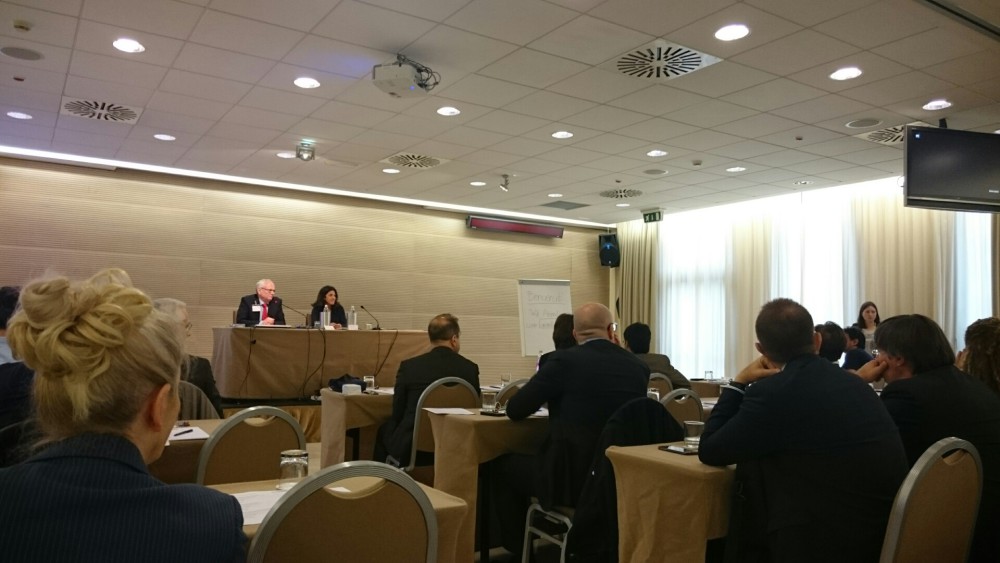Blog

New year, new ideas at LEXILAB!
As we approach the half-way point of the first month of 2017, LEXILAB is looking at what it wants to achieve this year. After last year’s successes, it will be a hard act to follow! However, we are refreshed and raring to go after the Christmas break and confident we can continue to make excellent progress, both as a business and a team. So, what is on the cards for us at LEXILAB this year?
Well, first we want to focus on productivity.
We are already working on new ways to improve how we work, spending less time on the menial tasks and more time on the important stuff, like keeping you, our customers, happy and growing both our and your business.
Second, we want to take a closer look at some case studies.
We think this will be a good way to really analyse how we are working, picking out what methods and strategies are producing results, so we can show you how we can simplify and speed up your translation projects, and weeding out any less fruitful paths to continue improving our service package.
Third, 2017 is going to be about training.
We believe in the importance of keeping our skills up to date. Change is fast paced and waits for no-one in our industry, which relies heavily on technology and language – neither of which ever stand still! It is essential that we continue to invest valuable time and effort in being the best we can for our customers. We also want to keep helping others with their training and development, so watch this space!
At LEXILAB we know that to achieve our goals we need to work with our mind and ears wide open, listening to external input and creating a working environment of mutual collaboration with our customers and service providers.
What do you plan to achieve for your business this year? Share your goals with us and maybe we can work together to achieve them!

2016: A YEAR OF GROWTH FOR LEXILAB
As the year draws to a close, the time has come to look back at what happened at LEXILAB in 2016!
It has been a positive year of growth, packed with interesting projects and wonderful new clients. We would like to share some of our achievements with you.
- Lots of new clients chose LEXILAB as their language services provider this year: our client base is up 20% on last year! These include businesses operating in the furniture and design sector, as well as manufacturers of construction machinery, machine tools and household appliances. We have even worked on educational and recreational board games, and on projects for vineyards and wineries.
- For the first time, English was not the most in-demand language this year; French knocked it off the top spot. Perhaps a side-effect of Brexit? We also received our first ever requests for translations into Tigrinya, Somali and Urdu – steps towards new frontiers.
- The language that really stands out for us this year though is Arabic. We saw requests treble! The gateway to the Middle East is well and truly open, a well-trodden path is forming, and we have worked to become experts in managing bi-directional languages.
- We successfully presented the first edition of our course “Traduzione: da che parte si comincia?”, aimed at young and aspiring translators, offering a wealth of information, tools, resources and advice for starting a career in translation.
- Our blog series [InDesign Essentials] has been a big hit, containing step-by-step guides on how to create manuals and price lists in InDesign that are optimised for translation.
- Finally, two exciting book projects stand our particularly from this year: the first in the form of a book about concrete, filled with engineering principles and formulas; the other uncovered the “handmade tales” of Maniago’s knife-making industry, oozing poetic style and imagery.
As we reflect on the year, we would also like to take the opportunity to say a big thank you to all of our translators, interpreters and colleagues for their constant support and dedication, and to our clients who continue to provide us with stimulating content every day.

Technical communication in “Industry 4.0”
We are living in what has already been defined as the fourth industrial revolution and, as with any large-scale global change involving humans and things, there are many different aspects at play. While some embrace the new ideas with enthusiasm and vision, others struggle with the change and are doubtful and uncertain, tied to the traditional way of doing things or perhaps lacking the means, knowledge or strategy to move with the times. Change is, however, in the air; there is a desire to explore, to experiment, to push as far as we can go, to see how new technology can help to simplify our daily lives.
These ideas were discussed last week at COMtecnica, a two-day conference where international experts gathered to debate intelligent information, dynamic content delivery, mobile documentation, and also change management and cultural differences in business.
Until just a couple of years, smart products that communicate among one another floated between definitions of a “smart present” and “smart future”, but they are now well and truly part of our modern lives.
Every day we use a myriad of smart products that simplify tasks: we drive ever more autonomous cars with digital displays, we wear devices that monitor our physical activity, we can see who is ringing our doorbell even when we are out, we turn the oven on before we leave work so dinner is ready when we return, and we receive our shopping list on our smartphone directly from the fridge that warns us when products have expired.
This is the Internet of Things: the revolution of interconnected digital devices that monitor our activity in real time and, with just a few clicks or taps, send all of the information we need to get around in traffic (SmartCars and SmartCities), automate our homes (SmartHomes), shop (SmartShopping), take care of our health (SmartHealth) and monitor all other aspects of our life (SmartLiving).
So how does technical communication fit into this scenario? It is clear that in this digitalised world product and service instructions need to be integrated, easily accessible from anywhere and retrievable according to need, in a targeted and relevant way. Users increasingly expect information to be relevant to their context, adaptive, rich with media, and personalised according to their level of knowledge and experience.
Today, the market already offers electronic displays and reading devices such as smartphones, tablets, video cameras as sensors, and Bluetooth or RFID as connectors. XML-based metadata for CCMS (Component Content Management Systems) are used to create databases to organise content, independent of the layout, to then create publications for the type of media required (websites, brochures, catalogues, etc.).
Technical documentation – first and foremost instruction manuals – is in the process of taking the leap towards electronic publication, which has the advantage of being useable from anywhere from smartphones and tablets, easily searchable and updateable in both online and offline mode. It is not, however, exempt from usage problems (lack of reading device, power failures, usage difficulties in specific environments, etc.).
The main obstacle to the spread of electronic documentation is, however, paper, which is still very widely used as the preferred user interface (PDFs too). This is, firstly, due to legislative requirements, which state that instructions must be delivered securely and available in the long term; secondly, because this is the traditional method used by many companies for delivering documentation (particularly in the industrial sector); and, lastly, because this is the format requested by the users themselves.
We are going through a period of change and innovation in which companies are advancing at different speeds: there are those who have already embraced new technology (see “Snap” by Elica, for example) and those who continue to remain loyal to traditional communication methods, where paper continues to represent a boundary, even where innovative publication technology is available.
During this transitional period, the best solution to adopt is then that of a “free choice of publication media”, according to the type of product or service, from hardcopy quick start guides to mobile information, augmented reality, embedded displays and online documentation, to make user access to information quicker, more immediate and targeted.
Whether online or on paper, digital or traditional, technical documentation is part of a company’s value and should be prepared and handled with care. An important factor to consider is that what a brand says through its marketing, communication and advertising (including, then, its technical documentation) is one of the parameters used by the Reputation Institute to evaluate a company’s all-important reputation, decisive when it comes to being successful.
So what does this all mean? It is another reason to spend time and effort preparing your documentation and corporate communication, and another reason to choose a professional language service provider to help boost your brand and promote your corporate image.
